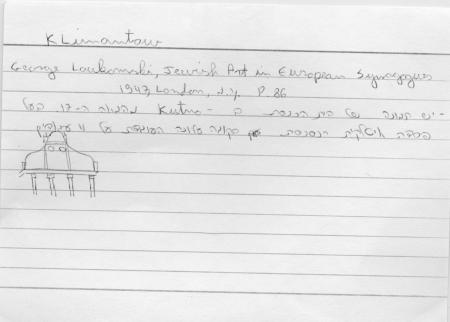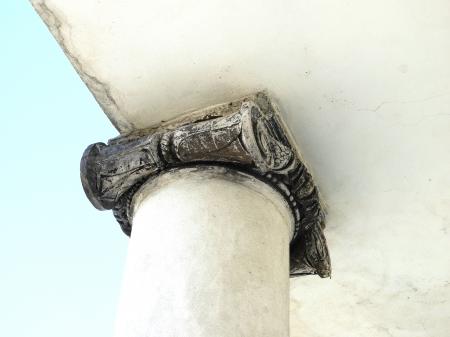Obj. ID: 20926
Jewish Architecture Synagogue in Klimontów, Poland

Text from Virtual Shtetl website:
The synagogue is located in the eastern part of Klimontów, near Adam Mickiewicz Square, in Bóżniczna Street. The building constituted once the central element of the synagogue complex, situated near the rabbi’s house and the mikveh. It has plastered walls and is built on rectangular base. It is covered by a low pavilion sheet roof. The front elevation (western) is preceded by a four column porch in Ionic order headed by a triangle cornice.
The synagogue constituted at the same time the central point of the Jewish district. The front of the building (the western elevation) is located in Adama Mickiewicza Square, in the vicinity (300 m) of the market square in Klimontów. By the opposite side of the synagogue (eastern elevation) there was a Jewish cemetery (now it is a school yard at 1 Szkolna Street).
It is difficult to determine exactly the date of construction of the synagogue in Klimontów. Part of the researchers mention the year 1851.Their hypothesis is confirmed by the inscription on the external fronton of the building. The inscription at the same time informs that the building was built by Jan Sobkowski.
There are circumstances to consider the year 1851 as the date of building the synagogue. In this case researchers put forward the argument that in the years 1857-1865 the Jewish kehilla in Klimontów owned the wooden house of the rabbi, the wooden and brick schools and a wooden hospital. Only in 1865 the community in its budget mentioned the costs of the synagogue’s equipment. So with all certainty it must have existed as a completely finished building.
The Klimontów Kehilla provided 30,000 zł for the synagogue. The decision to build a brick synagogue could have been taken under the influence of the deteriorating condition of its wooden predecessor. It is even more likely because in the 1850s the project of replacing wooden synagogues with brick ones was undertaken in some other kehillot.
In the interwar period only basic funds were allocated for the synagogue which sufficed only for maintenance.
The building’s condition deteriorated a lot when it was taken over by German authorities. First it was closed that it was used for storage of precious property stolen from Jews. The warehouse was conquered on January 26, 1943 by the Jędrusie underground group. Part of the goods were given for charity for the town’s residents.
After the war the synagogue was used as a storehouse of fruit and vegetables. In 1959 by a court’s sentence it was passed over to the national treasury.
Nowadays the windows are protected by wooden boards. Traces of the previous usage of the building are to be found only in the niche for the Torah ark.
Nowadays the lot and building of the synagogue have been passed over to the Union of Jewish Religious Communities in Poland. The synagogue was restored with the money of American sponsors. It is opened only once a year during the celebration of the Jewish feast called “Brunonalia”, organized by the town’s authorities and the Association of Lovers of Bruno Jasienski’s Works. The event is organized about July 17, it embraces music, art and theater workshops, accompanied by concerts, performances, poetry readings and sport events.






















